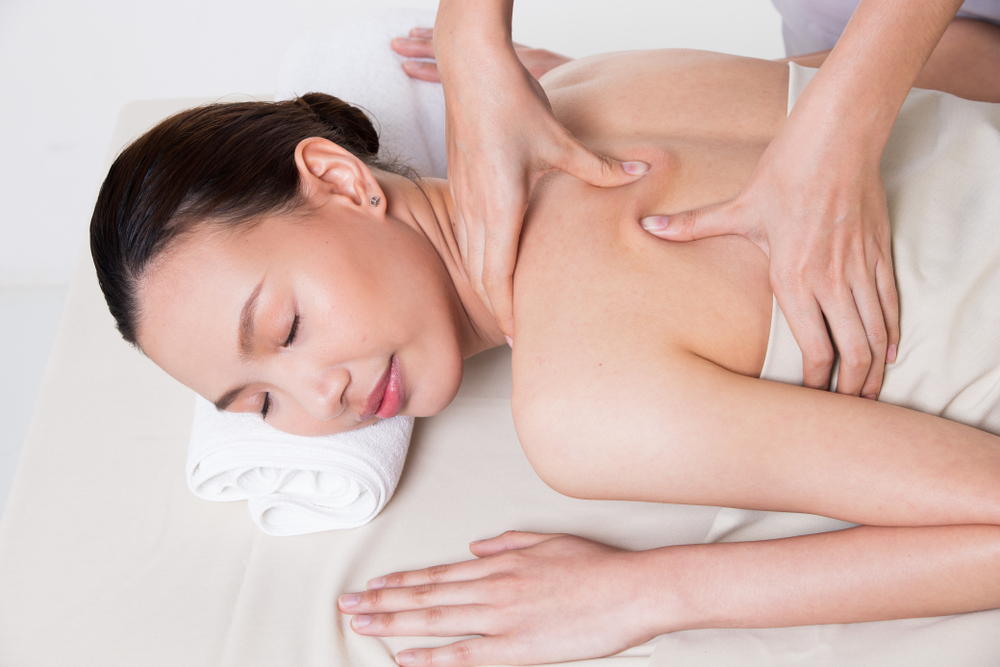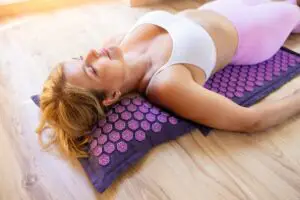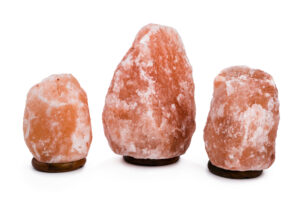Pressure points are specific areas on the human body that, when stimulated, can elicit a variety of responses. They are often used in alternative medicine practices, such as acupressure and reflexology, to relieve pain and restore balance to the body. By understanding and utilising these points, individuals can take control of their health and well-being in a non-invasive manner.
The human body consists of numerous pressure points, each affecting different aspects of health. Five key pressure points have been identified as particularly beneficial in addressing symptoms for a range of conditions. The stimulation of these points is believed to alleviate pain, reduce stress, and improve overall well-being, providing both physical and mental benefits.
In this article, we will be examining these five essential body pressure points, exploring their locations and discussing the specific health benefits associated with each of them. By gaining a deeper understanding of these pressure points, you can incorporate them into your wellness routine and potentially improve your quality of life.
Understanding Pressure Points
Pressure points, also known as acupoints, are specific areas on the body that are sensitive and considered vital in traditional Chinese medicine. They are the basis for both acupuncture and acupressure. These practices have been developed over thousands of years and are built on the foundation of chi or vital energy that flows through the body.
In Chinese medicine, the body’s energy, or chi, flows through pathways called meridians. These meridians connect various pressure points for different organs and bodily functions. When one’s chi is disrupted or blocked, it can result in various health issues such as pain, stress, and illness. The application of pressure or stimulation at these pressure points can help to restore the proper flow of chi, thus promoting overall physical and mental health.
Acupuncture involves the insertion of thin needles into specific pressure points on the body to alleviate pain and to treat various health conditions. On the other hand, acupressure uses the application of manual pressure on these same points, with practitioners using their fingers, palms, or elbows to apply pressure. Acupressure can also be done with the help of tools like acupressure mats or balls.
The following are five common pressure points used in acupuncture and acupressure:
- LI-4 (Hegu): This point is located between the thumb and index finger and is used to relieve headaches, neck pain, and toothaches.
- GV-20 (Baihui): Found at the top of the head, this point is used to alleviate stress, anxiety, and exhaustion.
- SP-6 (Sanyinjiao): Situated on the inner side of the lower leg, this pressure point is helpful in treating digestive issues, menstrual problems, and insomnia.
- ST-36 (Zusanli): Located on the outer side of the lower leg, this point aids in improving immune function and alleviating fatigue and digestive problems.
- PC-6 (Neiguan): This point, situated on the inner forearm, is useful for treating nausea, motion sickness, and anxiety.
In conclusion, pressure points are an integral part of traditional Chinese medicine, enabling practitioners to unblock and manipulate chi for better health. While acupuncture and acupressure may not have the same evidence-based support as conventional medicine, they offer an alternative method for addressing various ailments and promoting wellbeing.
The Five Key Body Pressure Points
The Third Eye
The Third Eye pressure point is located on the forehead, directly between the eyebrows. This point is believed to help alleviate headaches and improve mental clarity. Gently applying pressure to this area can help reduce stress, enhance focus, and support overall emotional well-being.
The Inner Gate
The Inner Gate is located on the inner forearm, about three finger-widths above the wrist crease. This pressure point is known for its potential to reduce anxiety and stress, as well as provide relief from palpitations and stomach discomfort. Applying firm pressure to the Inner Gate in a circular motion for a few minutes can help promote relaxation and balance.
The Spirit Gate
The Spirit Gate is found on the outer side of the wrist, just below the pinky finger. Stimulating this pressure point is thought to help with sleep problems such as insomnia, as well as calm the mind and reduce emotional distress. Gently pressing and massaging the Spirit Gate for a few minutes before bedtime can promote restful sleep and improve emotional health.
The Neck Pressure Point
The Neck Pressure Point is located at the base of the skull, where the neck muscles attach. This point is known for its potential to alleviate tension headaches, muscle stiffness, and stress-related issues. Applying gentle pressure and massaging the Neck Pressure Point can help to release tension and promote a sense of relaxation.
The Lower Back Pressure Point
The Lower Back Pressure Point is located near the spine, just above the tailbone. This pressure point can help alleviate lower back pain, sciatica, hip pain and stiffness. Applying firm pressure to the Lower Back Pressure Point for a few minutes can help relieve pain and improve overall well-being.
Application of Pressure Points
The use of pressure points has been an essential aspect of martial arts for centuries. In fact, the concept can be traced back to the legendary samurai warrior Minamoto no Yoshimitsu, who laid the foundation for these techniques in the 11th and 12th centuries. Pressure points are specific areas on the human body that can yield significant effects when manipulated correctly, often-times in self-defense or therapeutic settings.
One of the most well-known applications of pressure points is in martial arts, where practitioners use their knowledge of these sensitive areas to skillfully immobilise, control, or subdue their opponents. Pressure points are also commonly used in healing practices such as acupressure and acupuncture, targeting specific areas to alleviate pain and address various health issues.
Martial artists generally rely on their understanding of the body’s anatomy and pressure points to execute precise strikes and manipulate their opponents effectively. Additionally, they employ deep focus and concentration to execute these techniques with accuracy and control.
In conclusion, the application of pressure points is a profound aspect of martial arts that combines ancient knowledge, precise execution, and an understanding of human anatomy. By mastering these points, individuals can deftly manage their opponents’ movements or provide relief in therapeutic situations.
Pressure Points and Pain Relief
Headache Relief
Headache, particularly tension headaches, can be alleviated through the use of certain pressure points. The acupressure point known as LI4 is located in the flesh between the thumb and the index finger. Gently applying pressure to this point for a few minutes may help relieve headache and tension.
Neck Pain Relief
Neck pain is a common discomfort that can be addressed through the stimulation of specific pressure points. One such point is GB21, also known as the “Shoulder Well.” This point can be found on the top of the shoulder, halfway between the base of the neck and the tip of the shoulder. Applying gentle pressure to this point may provide relief from neck pain and stiffness.
Lower Back Pain Relief
Lower back pain can be tackled by targeting specific pressure points on the body. B23 and B47, known as “Sea of Vitality” points, are located on either side of the lower back, approximately two finger-widths away from the spine. Applying firm but gentle pressure to these points may help alleviate lower back pain and tension.
Additionally, ST36 is an effective pressure point found on the front side of the lower leg, between the tibia and fibula, close to the knee, that might help in reducing lower back pain, when pressed.
Pressure Points in Reflexology
Reflexology is a complementary therapy that focuses on applying pressure to specific points on the hands and feet to encourage healing and relaxation in corresponding areas of the body. Techniques often involve the use of fingers, thumbs, and palms to stimulate these pressure points, aiming to improve overall health and well-being. In this section, we will explore hand and foot pressure points in reflexology.
Hand Pressure Points
There are several pressure points found in the hands which, when stimulated, correspond to various parts of the body. These points include areas on the fingers, thumbs, wrists, and the back of the hands. Pressure applied to these points can potentially alleviate physical discomfort and promote better mental health.
For example, the point located at the base of the thumb, known as the “thenar eminence,” can help ease tension in the head and neck when pressure is applied. Similarly, applying pressure to the “heart point,” situated at the outer edge of the palm below the little finger, may promote emotional balance and alleviate anxiety.
Foot Pressure Points
Reflexologists place significant emphasis on the foot pressure points, as there is a vast network of points that extend from the toes to the ankles, corresponding to different areas in the body. By stimulating these points, reflexologists aim to improve the flow of energy within the body and address various health issues.
For example, the “bubbling spring” point, found on the sole of the foot just below the ball of the foot, is believed to help with insomnia and enhance relaxation. Another point, the “three yin intersection,” is located on the inner leg above the ankle, and when massaged, may provide relief for menstrual pain and cramps.
Taking the time to understand and explore these pressure points in reflexology can be a valuable addition to one’s approach to overall wellness. By paying closer attention to our hands, feet, and the connections they make to the rest of the body, we can enhance our mind-body balance and promote greater self-awareness.
Pressure Points for Emotional Health
There are several pressure points in the body that may help alleviate stress, anxiety, depression, and contribute to overall emotional balance. By understanding and applying gentle pressure to these points, individuals can experience relief from various emotional discomforts.
One of the most well-known pressure points for emotional health is Yin Tang, located between the eyebrows. Known as the Hall of Impression point, it’s believed to aid in reducing stress and promoting relaxation. To activate this point, simply apply gentle pressure with the thumb, moving in small circular motions.
Another key pressure point is found in the shoulder muscle, known as the Shoulder Well point. This point can be identified by pinching your shoulder muscle with your middle finger and thumb. Applying pressure to this area has been found to help relieve muscle tension, stress, and headaches.
The Hegu point is located between the thumb and index finger, in the fleshy area of the hand. Applying firm, circular pressure on this point can help alleviate anxiety, pain, and tension headaches. It is suggested to massage this point for up to five minutes to experience the full benefits.
Other powerful pressure points include the Nei Guan point, found three finger widths below the wrist on the inner forearm, and the Shen Men (Spirit Gate) point, just above the wrist crease on the outer edge of the hand. When pressure is applied to these points, the individual may experience a reduction in anxiety and an increased sense of balance.
In conclusion, applying pressure to these key points can provide natural relief from stress, anxiety, depression, and contribute to one’s overall emotional well-being. Though these techniques can be useful for managing emotional health, professional help should always be sought if these conditions persist or worsen.
Addressing Common Health Issues
Sore Throat Relief
Applying pressure to specific points on the body can help alleviate the pain and discomfort associated with a sore throat. One effective pressure point is the LI-4, also known as the “Adjoining Valley”. To locate this point, position your left hand palm down and lightly squeeze your thumb and index finger together. A slight bulge in the muscle between the thumb and index finger will indicate the correct spot. Applying pressure to this area may provide relief for sore throat symptoms.
Relief for Sinus Pressure
Sinus pressure can cause headaches and overall discomfort, but there are pressure points that may help alleviate these symptoms. A commonly used point is the “Welcome Fragrance” or LI-20, located at the groove on either side of the nostrils. Gently applying pressure to this area can help open up the sinuses and relieve pressure. Additionally, the LI-4 pressure point mentioned earlier can also be beneficial in reducing sinus pain and pressure.
Insomnia Solutions
Insomnia and sleep disturbances can negatively impact one’s overall health, so finding natural ways to improve sleep is essential. Pressure points, such as “Spirit Gate” or HT-7, located on the wrist crease below the little finger’s base, can help calm the mind and promote restful sleep. Gently applying pressure to this point for a minute or two before bed may facilitate relaxation and encourage better sleep patterns.
Additionally, the GB-20 point at the base of the skull may also aid in reducing insomnia symptoms by relieving tension and promoting relaxation.
By incorporating acupressure techniques and targeting these specific pressure points, one may experience relief from common health issues like sore throat, sinus pressure, and insomnia. It’s important to remember that acupressure should be used in conjunction with conventional medical treatments and only under professional guidance if you’re new to the practice or have serious health concerns.
Potential Risks of Pressure Points
Pressure points are specific areas on the human body where nerves, muscles, and tendons intersect. Manipulating these points can cause pain or relief, depending on the techniques applied. However, it is essential to be aware of the potential risks associated with pressure points, as improper use could result in injury or even death.
One such pressure point that poses a significant risk is the stomach-9 point located in the neck region. In this area, the carotid artery is responsible for supplying blood to the brain.
It is crucial that anyone engaging in the practice of pressure point manipulation be well-trained and knowledgeable in the techniques and precautions necessary to avoid causing unintended harm. Offering due consideration to the risks and understanding how to apply pressure appropriately are the keys to ensuring that pressure points are used safely and effectively.

I’m Jennifer a beauty and wellness expert. I believe in promoting a sustainable and healthy lifestyle from within. Helping people feel good is my passion; whether it’s teaching yoga or offering skincare advice.







